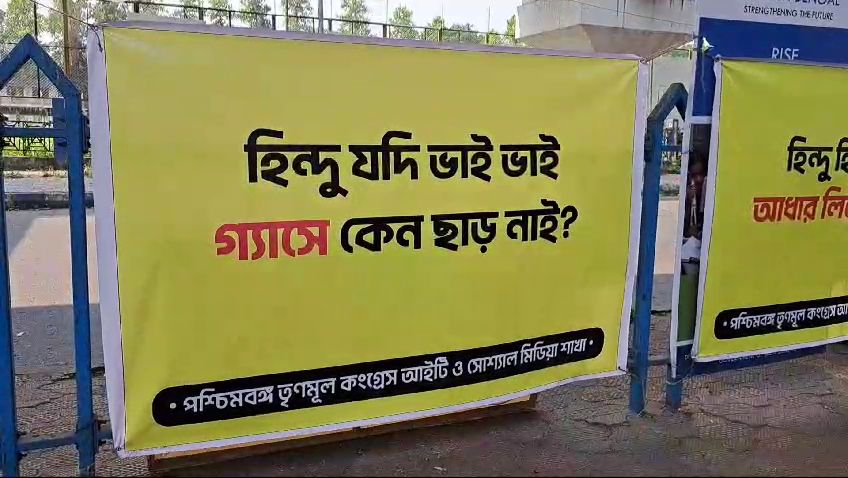Kolkata, India: With a year to go until the 2026 West Bengal Assembly elections, political tensions are already intensifying, driven by posters advocating Hindu solidarity and a BJP victory. These posters, which have appeared in Bankura and Chinsurah Hooghly, bear the slogan “Hindu Hindu bhai bhai, 2026 BJP chai” (Hindus are brothers, we want BJP in 2026). Their emergence has sparked fierce debate regarding the role of religion in the forthcoming elections, raising concerns about deepening political divisions in the state.
Suresh Shau, a local BJP leader allegedly behind one of the posters, defended the slogan, citing fears over what he described as rising “Jihadi activities” and recent incidents of idol desecration.
“With the increasing instances of Jihadi activities in Bengal and the recent vandalism of idols, Hindus must unite, which is why these slogans have been put up,” Shau stated.
However, Locket Chatterjee, the BJP’s 2024 Lok Sabha candidate from Hooghly, distanced the party from these posters, attributing their appearance to a broader nationwide “Hindutva wave” following the Maha Kumbh. Despite this disavowal, the BJP’s continued emphasis on religious themes suggests a strategic effort to consolidate Hindu voters ahead of the elections.
TMC-BJP Power Struggle
Political analysts observe that since the BJP’s emergence in West Bengal in 2019, polarisation politics has gained significant momentum. While the BJP has managed to establish a stronghold in North Bengal, South Bengal remains a fiercely contested battleground between the saffron party and the ruling Trinamool Congress (TMC). Areas such as South 24 Parganas, North 24 Parganas, Nadia, and Murshidabad, which have a sizable minority population, are considered strongholds of the TMC, making them crucial in the electoral battle.
TMC leaders have strongly condemned the BJP’s tactics, accusing the party of attempting to divide the electorate along religious lines. State Minister Shobhondev Chatterjee dismissed the BJP’s approach, insisting that communal politics would not appeal to Bengal’s voters.
“Their [BJP] various strategies in 2021 were unsuccessful. This time, they are once again playing the religion card. It will not work. The people of Bengal reject communal politics,” Chatterjee declared.
TMC Counters with Its Own Posters
In response to the BJP’s campaign, the TMC has launched a counter-campaign using the same slogan but reinterpreting it as a critique of the central government. The TMC posters read: “Hindu Hindu Bhai Bhai, but where is our full minister?”—a pointed reference to the absence of cabinet representation for Bengal in the Modi administration. Another version questions: “Hindu Hindu Bhai Bhai, where is the gas subsidy?” highlighting the soaring fuel prices.
The ongoing battle for public perception between the BJP and the TMC appears to be setting the stage for an unprecedented level of political polarisation as the 2026 elections draw closer. While the BJP is accused of mobilising the majority community, TMC leader Mamata Banerjee has also faced criticism from the opposition for her outreach to the Muslim community, including attending Iftar gatherings and visiting Furfura Sharif, an important Sufi shrine. Banerjee, however, has defended her actions, asserting that Bengal is a secular state and that she visits religious sites of all faiths.
As political tensions continue to escalate, the lead-up to the 2026 elections is likely to witness an intensification of communal rhetoric from both sides. Whether this heightened polarisation will translate into electoral gains for either party remains to be seen.


